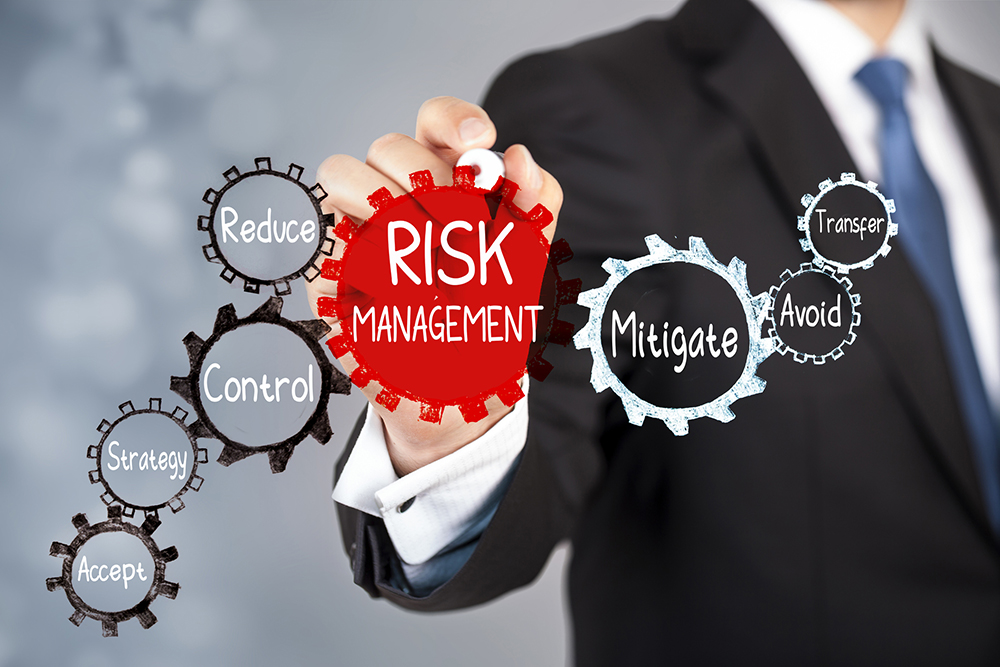With the new year upon us, many businesses are already looking at what is going to move the needle in 2022. After such an unpredictable couple of years, many businesses are doing their best to not fall behind on the latest developments.
One thing that businesses are monitoring are risk management trends for 2022. A very important part of maintaining the health of a business, risk management is something that requires constant care and attention. Yet many businesses may not know where to start, especially if they are new to the process of risk management and risk assessments. Online guides can be overwhelming, YouTube videos can be boring, and teams assigned to handle risk management may feel overwhelmed or may end up making errors.
Read on to find a quick and simple guide on risk management trends you can expect to see in 2022, and how they can keep your business running smoothly.
Contents
1. Conducting Regular Risk Assessments
Conducting regular risk assessments is crucial to keeping employees aware of the risks that face a business. These assessments allow assessment teams to see where a business might be at risk of losing income, facing a cybersecurity threat, or even may suffer damage to its reputation.
Some risks that the average business may face includes: financial threats, such as clients paying invoices late, or vendors suddenly increasing their prices; cybersecurity threats, such as a lack of antivirus software, or employees not being trained on avoiding phishing attacks; and reputation risks, such as contractors posting offensive content on the company’s social media, or negative customer reviews outweighing positive feedback on review sites.
However, risk assessments can be labor-intensive, and can take employees away from their day-to-day responsibilities. A good, working solution is to have your risk assessment team make use of risk management software. This software allows employees to automate the risk assessment process, and receive the results quickly.
With this information, employees can inform supervisors and other departments of the latest risks to be aware of, while also receiving status updates on existing risks.
2. Investing in a Risk Management Software
As mentioned above, many businesses are investing in risk management programs to speed up their risk management processes. Many programs are able to carry out risk assessments automatically, and generate risk registers to keep track of every risk uncovered during the process.
Risk registers act as a directory of all risks that have been identified in past and present risk assessments. These registers are deeply detailed, containing information on each potential risk, the likelihood of that risk actually occurring, and identifying information to separate each risk from others. Companies can use these registers to see which risks don’t require immediate attention, which risks need to be resolved promptly, and how they can be handled. Registers generated by risk management software should not be used just once; they should be an invaluable tool when it comes to short-term decision making and what purchases need to be made to better protect the company.
These types of risk management software also often come with additional features included. These supplemental features are typically a collection of auditing softwares and risk monitoring programs. Such features allow for businesses to truly get the most out of their purchase, while also keeping close tabs on the overall health of their company. Over time, ideally, these programs would be integrated into each department’s daily operations.
3. Monitoring Risks
When a risk management software or risk assessment team completes a risk assessment, managers might take notice of the different risk levels that each risk has. These “levels” are meant to show which risks need to be resolved immediately, and which ones can be taken care of at a later date.
In addition, extremely low-risk risks don’t need to be resolved at all. While time-sensitive, high-priority risks – such as a hole in the company’s cybersecurity system- need to be tackled immediately to prevent disaster, lower-priority risks can be merely monitored. Such low-risk risks only need to be acted upon if they come closer to becoming tangible threats to the company.
The monitoring of risks can be done manually or automatically, with the help of risk management software. Many companies opt for both, designating a risk management team to utilize software to keep track of low-priority risks.
Regardless of the way in which a business monitors its risks, it’s merely important that a business dedicate resources to it regularly. A business should be aware of every risk, no matter how small, so that teams can be prepared to fix an issue before it becomes something truly damaging to the company.
One example of a low-priority risk is a vendor that delivers goods on time, at reasonable prices. While there may be a risk there of prices increasing or goods not being delivered on time, if there is no history of issues with that vendor, that risk would be considered unlikely, or low-priority. However, if the vendor were to raise prices by a substantial amount, and/or make a delivery or two later than the given date, they are no longer a low-priority risk. If a business has been monitoring their risks properly, these changes would be immediately noticed, and the business can begin to look for new vendors before the problem worsens.
Overall, these three risk management trends can help a business stay on top of every risk that may threaten it. By putting the time, effort and resources into risk management, a business can nip issues in the bud, potentially saving a fortune or even keeping the company afloat. Before venturing into risk management, it’s important for a business to decide on which team members will be tasked with managing risks and risk assessments, and which risk management software they should use, if any. By having a plan and by taking steps to put a proper risk management process in place, a business can dive into risk management with ease and without breaking the bank.




